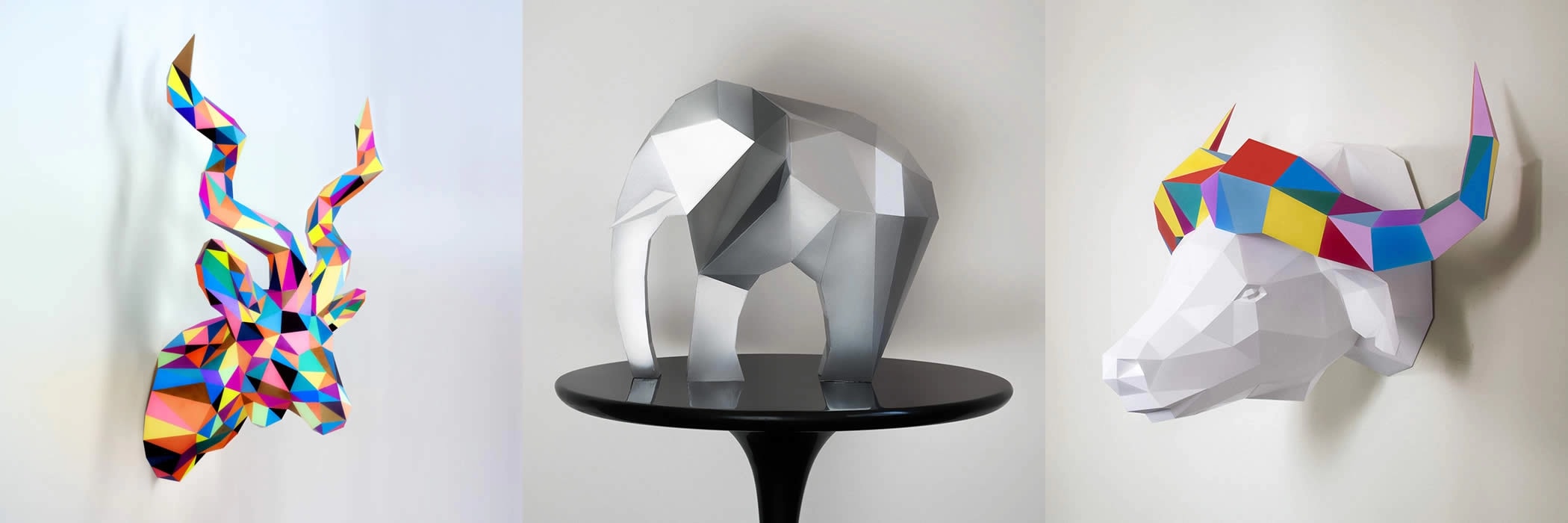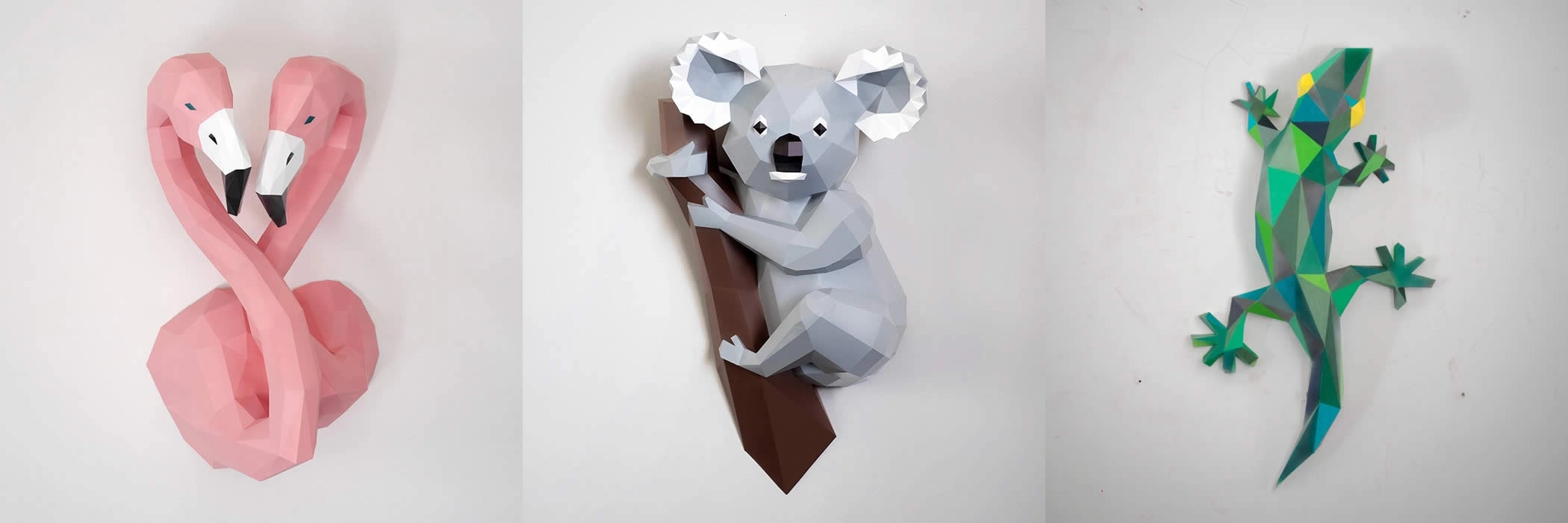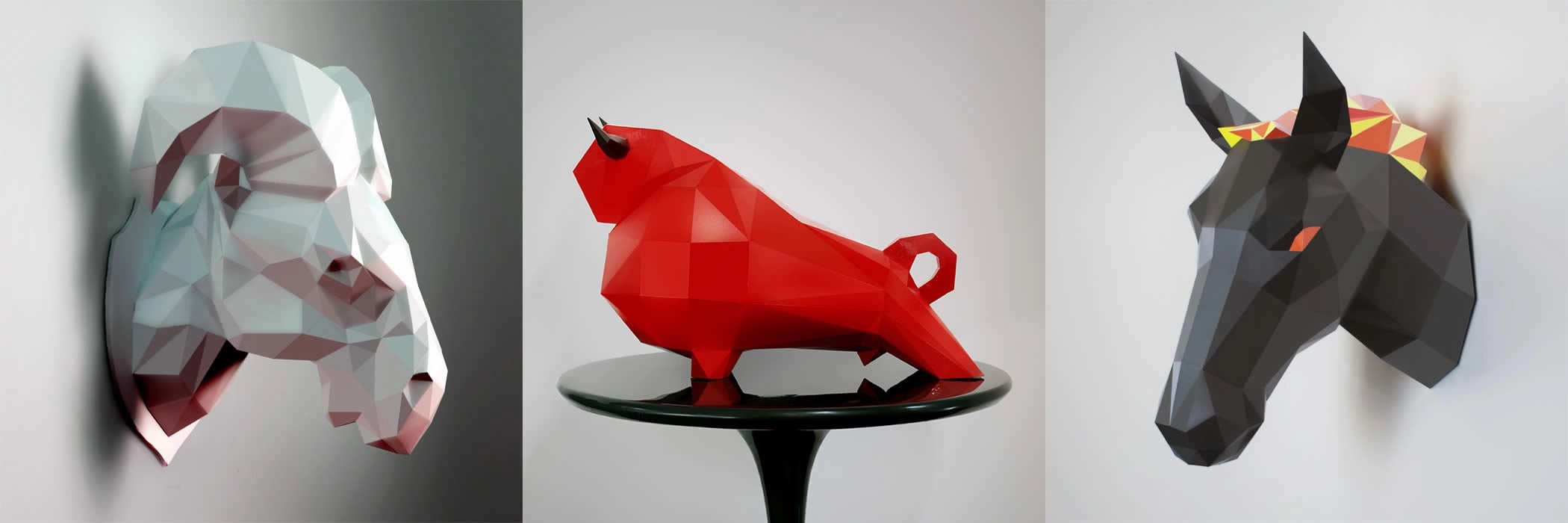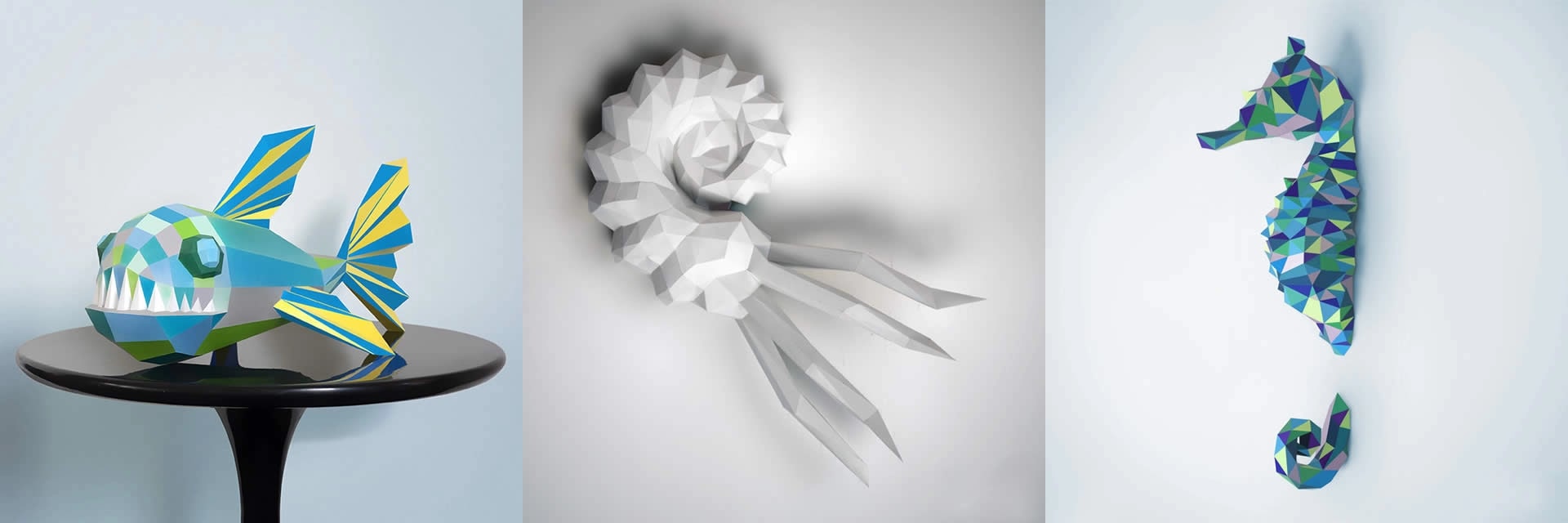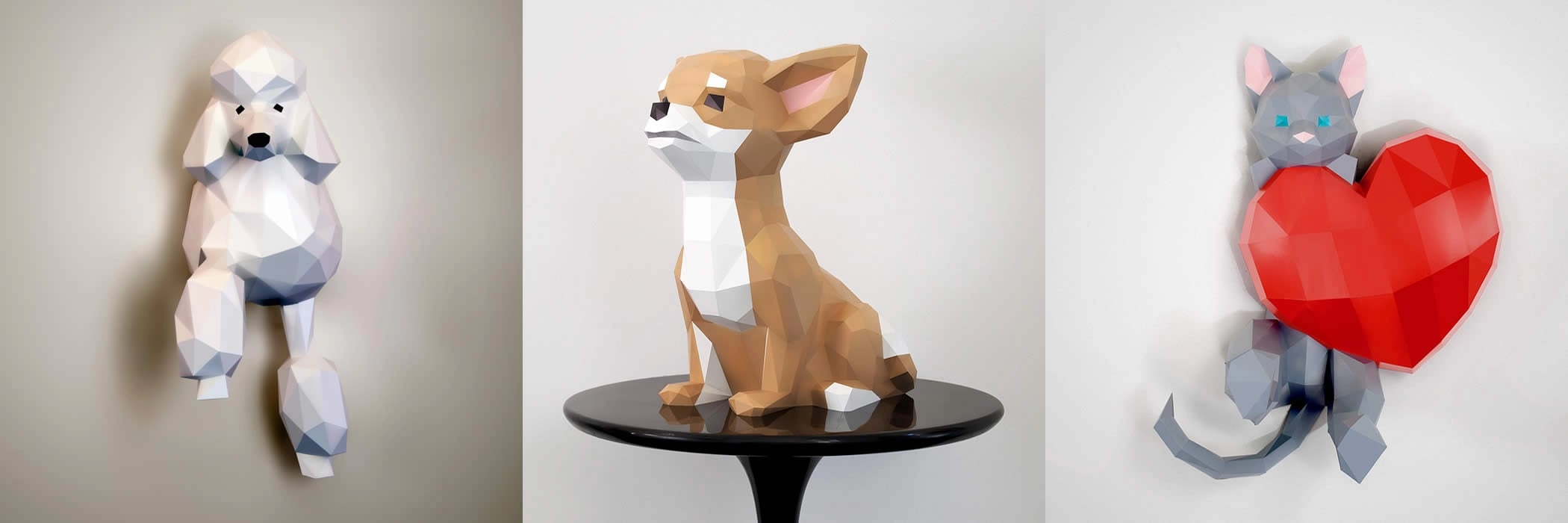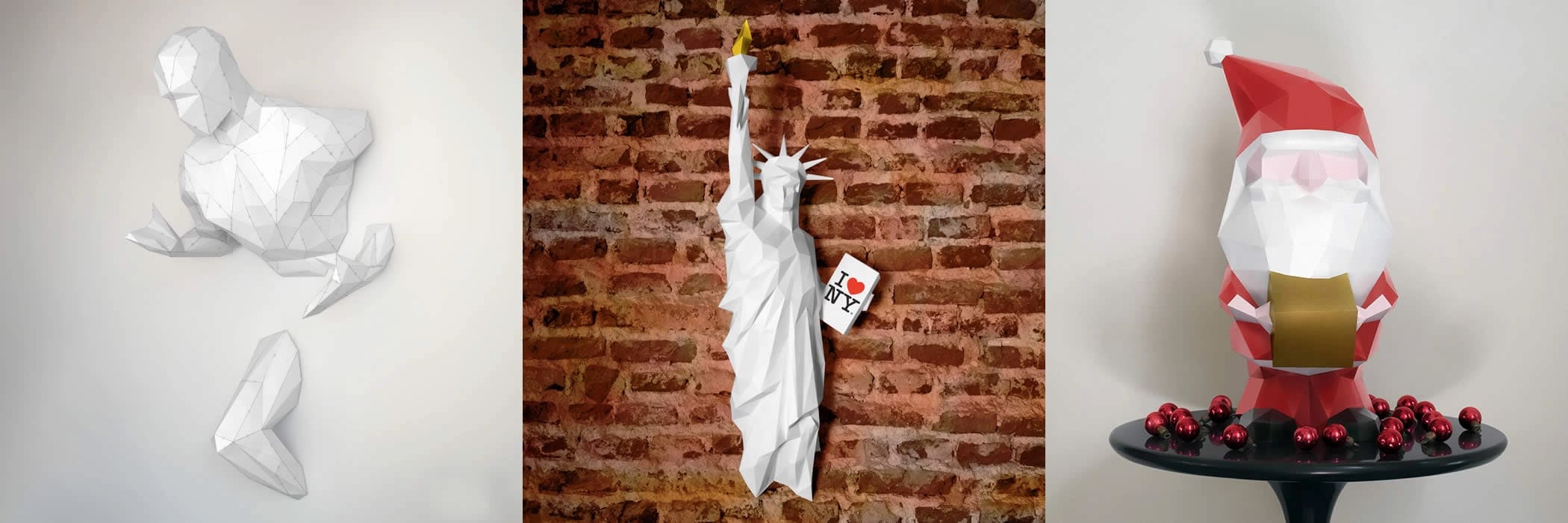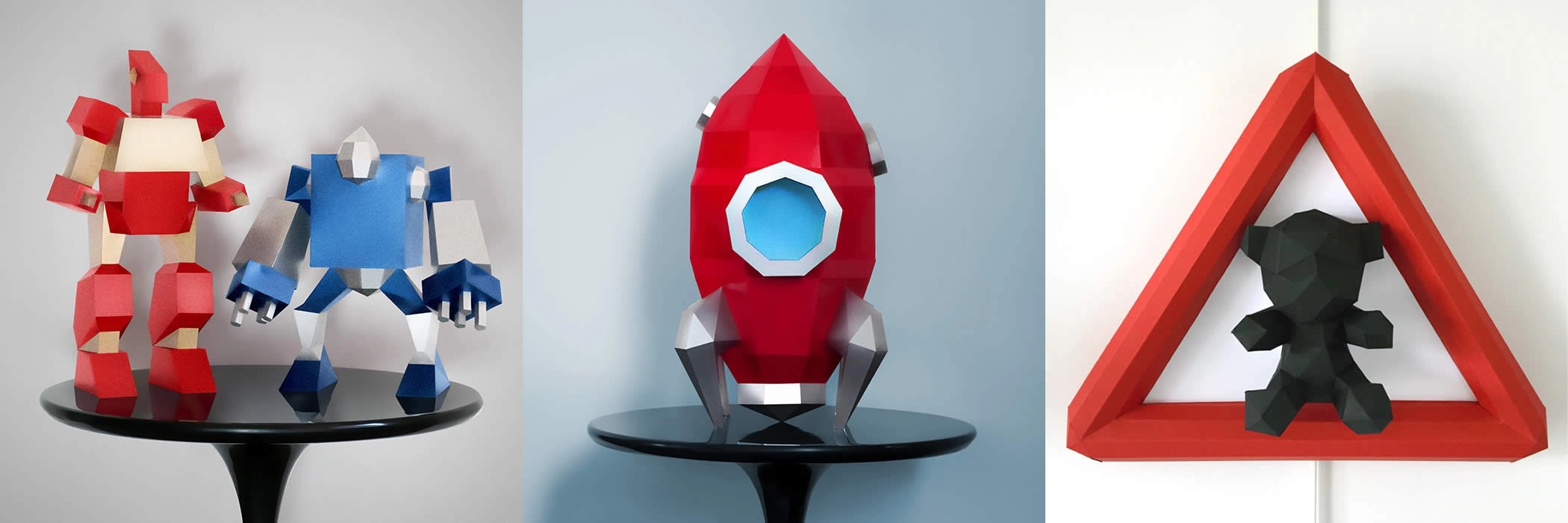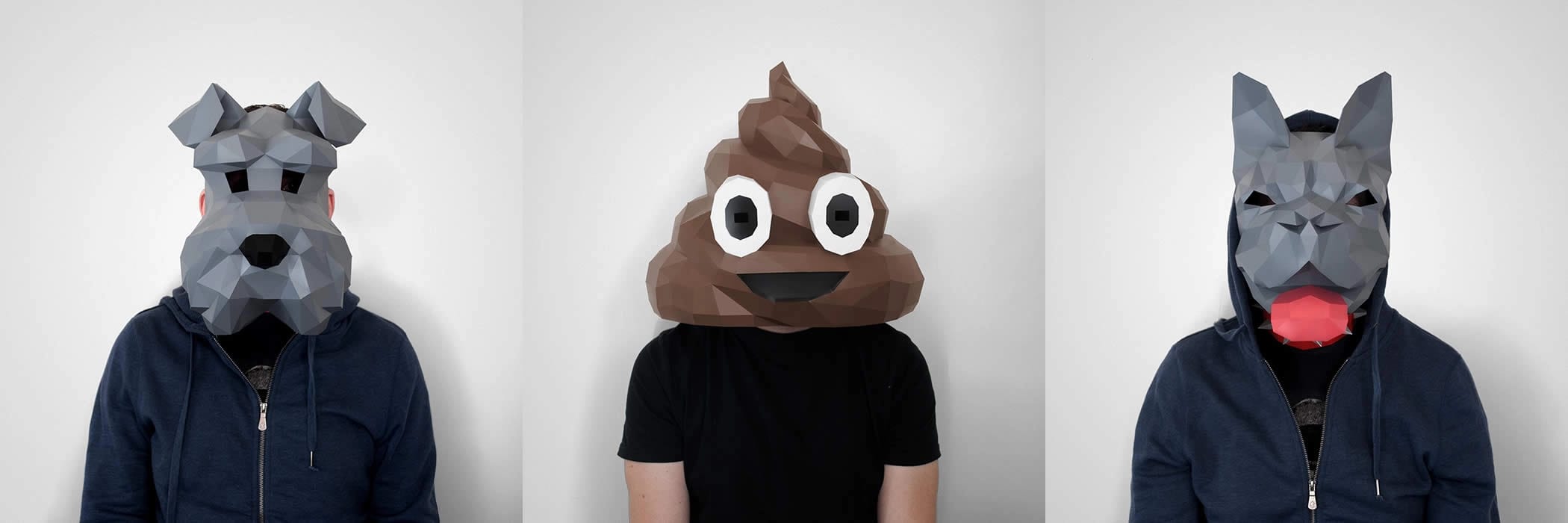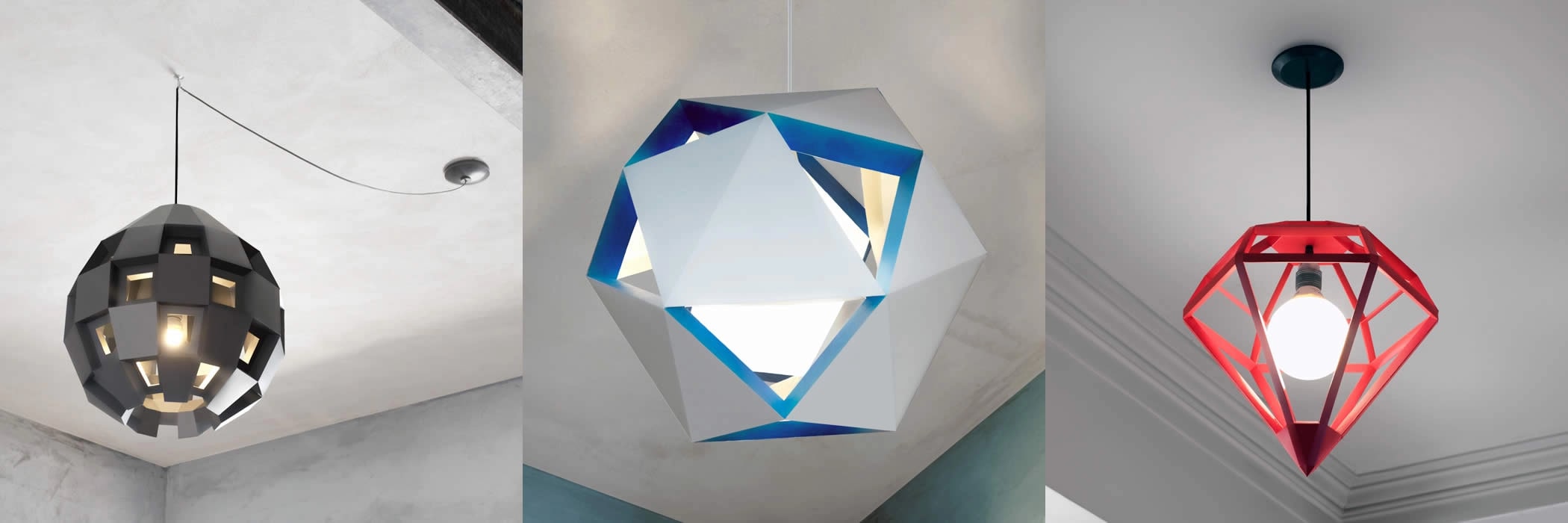ABOUT ECOGAMI

Eric lives between France and Argentina. He discovered 3D papercraft in 2016, by randomly finding on the internet a picture of an animal trophy. Admirer, he wondered if he could make such a paper sculpture himself then he found several templates on a special website. He bought an elephant trophy.
He said "I loved the assembly process. Quiet at home, with my favorite music, cutting, folding and gluing became quickly a source of relaxation and an entertainment. ». Various other sculptures came soon after, each one bringing fun during the assemblage and self-reward at the end with a beautiful wall mount.
How do you move from the "leisure" phase to the "production" phase?
At the Beginning of 2017, after making a dozen of sculptures, I wondered if I could create my own sculptures. I searched the Internet, it seemed to be out of my skills, but I was motivated! So, after getting acquainted with several 3D design software, I learned to transform a three-dimensional object into a two-dimensional pattern... Ecogami started and a few months later I launched my own website EcogamiShop.com
Why the name Ecogami?
"Eco" comes from "Ecology” and "Gami" comes from the word "Origami" which is another paper art. I liked the word as a whole, "Ecogami”, so I adopted it!
What is your style of creations? Why are you so attracted to animal sculptures?
I've always loved nature and animals. In my childhood, my mother bought me the magazine "Nature" which I always read completely. I confess that at the time, I did not always understand the scientific articles, but their beautiful pictures of animals fascinated me.
Today I live in the city, but my roots are still in the countryside. That's why most of my creations represent animals. I feel concerned about global warming and the decline of biodiversity. Representing animals is therefore a kind of homage. It is also a universal theme that pleases many people.
My grandparents had deer trophies in their living room. They impressed me even if I looked at them with sadness too. It was another time, today, I am proud to offer a substitute without any animal being killed.
We are not strictly speaking of Origami, even if the result is quite similar?
Origami and papercraft have things in common, both are paper arts. Besides, papercraft is sometimes called "3D origami" which can be confusing. These are two very distinct things.
Origami is the art of folding paper in order to form a sculpture.
Papercraft is like a 3D puzzle. The paper is cardboard (thicker than origami paper), and the technique involves cutting, folding and gluing. Papercraft patterns all have pieces to cut (with scissors or with a special cutting machine), each piece has tabs, numbers and folding lines. There are two kinds of folding (mountain and valley). The numbers go in pairs. So, there is just to match the numbers between them (thanks to the tabs) and follow the order of the pattern.
There are two assembling techniques: with the pattern numbers outside the sculpture or with the pattern numbers inside the sculpture. The second technique is a bit more difficult, but it offers the possibility to use color paper. I, personally, use the first technique (with the apparent numbers) because once the sculpture is assembled, I paint my sculptures. The painting allows to consolidate the sculpture.
For me one of the benefits of this activity is precisely the final customization. The personalization options are infinite and therefore leave room for imagination. I really like to see the achievements of those who assemble our models because it is always a surprise!
What are your sources of inspiration?
I have many sources of inspiration. First and as mentioned above, there are the animals but not only. I also inspire myself with decorative objects that I have at home or that I find by strolling on Pinterest.
How long does it take to make an animal trophy?
It depends very much of the model in question and of the person who will assemble the sculpture. These sculptures are called "low poly" (low polygon) which could be translated as "faceted sculptures". Some sculptures are more realistic and have more polygons than others, so they will have more pieces to cut and require more time. The size of the sculpture also influences. A large moose trophy for example will automatically have more pages and will be longer to assemble (a minimum of 15 hours) while a small model like the Chihuahua head will be faster (5 or 6 hours).
Papercraft is a manual activity, some say it is a therapeutic hobby, relaxing and quickly becoming "addictive". It certainly has a final goal (which is to achieve an object), but for me the assembly process is also a pleasure itself and that is why I do not count the hours.
Is it just folding, or is it sticking together?
No, it's not just folding. Each model has pieces that stick together (thanks to the tabs).
Are there any differences in rendering according to the paper?
The paper must be thick, I recommend a paper between 200 & 300 GSM. I use a 260 GSM paper that is perfect for this type of creation.
For a large model, I would recommend at least 240 GSM. For a small model, a thinner paper can be suitable. I saw sculptures assembled with 160 GSM paper with a correct result. On the other hand, standard office paper (75/80 GSM) will not suit as it will inflate.
In terms of texture, I use a smooth paper with a slight gloss. The photo paper will not fit because the glue will not adhere. It is also possible to use color paper, even patterned paper, the most important thing is that it should be thick.
Some models, like the seahorse which seems to come out of the wall, have many colors. Are they more complicated?
No, the assembly is not more complicated for the multicolored models. This is the customization that is longer here. Once the seahorse sculpture is finished, it is up to you to decide how to decorate it. Some will use color paper, so the assembly will be the final phase. Others can paint it with a single color or use a spray paint (here there are many options: stone effect spray, metallic spray...).
Or, like what I've done for several models, you could paint or color every polygon with a different color. There are several techniques here with several qualities of render. The simplest will be to color each facet with felt pencils. Otherwise paint the sculpture in white and then color each polygon with colored markers. Or paint each polygon with different color paints. Each customization technique offers a different rendering, but the goal is the same: having a unique object.
Which animals are most successful?
The seahorse is very successful. I think it is partly because it is in two parts and it gives the impression of emerging from the water or coming out of the wall. It is also because it is a mysterious and majestic animal. The cat on the branch has a lot of success as well as the dogs (Schnauzer, French Bulldog, Pug, Poodle, Boxer...). I get a lot of requests from people who want their dog breed! Otherwise the classics also appeal: the deer trophy but also the elephant, the rhino, the moose, the unicorn...
What is the minimum age which is required to make such sculptures? What is the easiest model?
I do not recommend papercraft to children under 12 years old, but I have been surprised once when a customer sent me a picture of a difficult model (a lampshade) assembled by her 9-year-old son. Each model comes with step-by-step instructions designed to be the most intuitive possible. I think it's important to read these instructions carefully to avoid mistakes. Papercraft requires patience and precision. About children, I recommend that parents look from time to time how it goes or even to start the assembly with their child. The elephant trophy is simple to assemble, the kangaroo too.
What are Ecogami's projects?
Our goal is to offer a wide variety of models. We receive regularly requests for models that we did not create & unfortunately; we cannot satisfy all these requests.
We also wish to make this activity known to as many people as possible. It is a fun, creative and self-rewarding activity. We offer free patterns so people can discover it.

